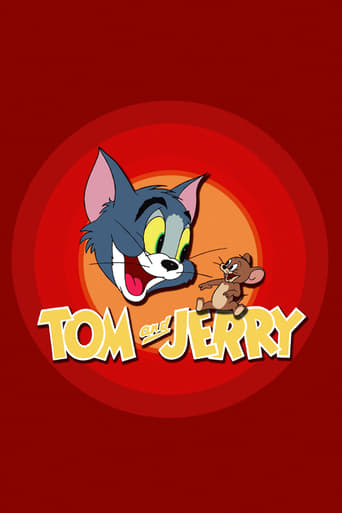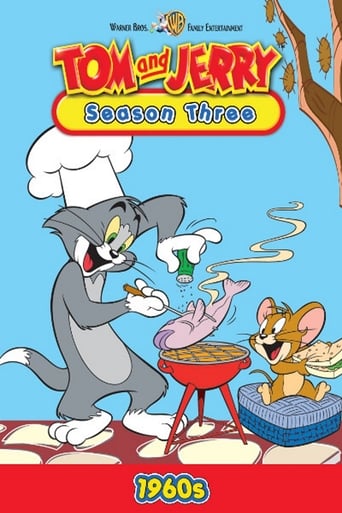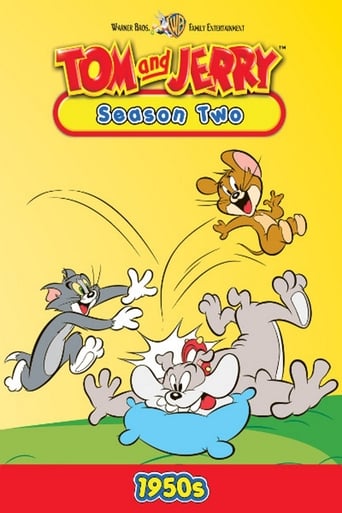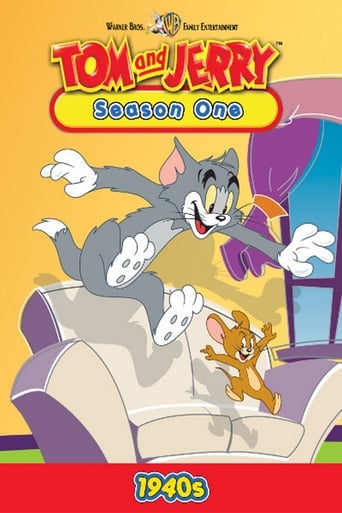Trailer
Synopsis
Tom and Jerry is a series of theatrical animated cartoon films created by William Hanna and Joseph Barbera for Metro-Goldwyn-Mayer, centering on a rivalry between a cat and a mouse whose chases include slapstick comedy.
Episode 68 : Tot Watchers
August. 01,1958

Tot Watchers is the 114th one-reel animated Tom and Jerry short, created in 1957, produced and directed by William Hanna and Joseph Barbera with music by Scott Bradley. The short was released by Metro-Goldwyn-Mayer on August 1, 1958, over a year after it was produced. It is the last Tom and Jerry theatrical cartoon produced or directed by Hanna and Barbera during the Golden Age of Hollywood animation.
Episode 68 : Tot Watchers
August. 01,1958

Tot Watchers is the 114th one-reel animated Tom and Jerry short, created in 1957, produced and directed by William Hanna and Joseph Barbera with music by Scott Bradley. The short was released by Metro-Goldwyn-Mayer on August 1, 1958, over a year after it was produced. It is the last Tom and Jerry theatrical cartoon produced or directed by Hanna and Barbera during the Golden Age of Hollywood animation.
Episode 67 : Robin Hoodwinked
June. 06,1958

Robin Hoodwinked is the 113th one reel animated Tom and Jerry short, copyrighted in 1957 and released on June 6, 1958 after the MGM cartoon studio had effectively closed down. It was the penultimate Tom and Jerry cartoon that was directed by William Hanna and Joseph Barbera with music by Scott Bradley. It also marked the final appearance of Nibbles, who first appeared in The Milky Waif. The cartoon was animated by Kenneth Muse, Carlo Vinci, Lewis Marshall and James Escalante with backgrounds by Robert Gentle and layouts by Richard Bickenbach.
Robin Hoodwinked is reminiscent of the "Mouseketeer" cartoons, except here, Tuffy speaks in a hybrid of Saxon/Cockney English as opposed to French.
Episode 67 : Robin Hoodwinked
June. 06,1958

Robin Hoodwinked is the 113th one reel animated Tom and Jerry short, copyrighted in 1957 and released on June 6, 1958 after the MGM cartoon studio had effectively closed down. It was the penultimate Tom and Jerry cartoon that was directed by William Hanna and Joseph Barbera with music by Scott Bradley. It also marked the final appearance of Nibbles, who first appeared in The Milky Waif. The cartoon was animated by Kenneth Muse, Carlo Vinci, Lewis Marshall and James Escalante with backgrounds by Robert Gentle and layouts by Richard Bickenbach.
Robin Hoodwinked is reminiscent of the "Mouseketeer" cartoons, except here, Tuffy speaks in a hybrid of Saxon/Cockney English as opposed to French.
Episode 66 : The Vanishing Duck
May. 02,1958

The Vanishing Duck is the 112th one reel animated Tom and Jerry short, created in 1957, directed and produced by William Hanna and Joseph Barbera with music by Scott Bradley. The cartoon was animated by Lewis Marshall, Kenneth Muse, Carlo Vinci and James Escalante, with backgrounds by Robert Gentle and layouts by Richard Bickenbach. Red Coffey, June Foray and George O'Hanlon provided the voices for this film. It was released on May 2, 1958 by Metro-Goldwyn-Mayer and marks the final appearance of Quacker, who appeared in seven previous Tom and Jerry shorts. As such, The Vanishing Duck is the antepenultimate Tom and Jerry short of the Hanna and Barbera era. O'Hanlon would go on to star as the voice of George Jetson on the ABC-TV animated series, The Jetsons, also produced by Hanna-Barbera, four years later.
Episode 66 : The Vanishing Duck
May. 02,1958

The Vanishing Duck is the 112th one reel animated Tom and Jerry short, created in 1957, directed and produced by William Hanna and Joseph Barbera with music by Scott Bradley. The cartoon was animated by Lewis Marshall, Kenneth Muse, Carlo Vinci and James Escalante, with backgrounds by Robert Gentle and layouts by Richard Bickenbach. Red Coffey, June Foray and George O'Hanlon provided the voices for this film. It was released on May 2, 1958 by Metro-Goldwyn-Mayer and marks the final appearance of Quacker, who appeared in seven previous Tom and Jerry shorts. As such, The Vanishing Duck is the antepenultimate Tom and Jerry short of the Hanna and Barbera era. O'Hanlon would go on to star as the voice of George Jetson on the ABC-TV animated series, The Jetsons, also produced by Hanna-Barbera, four years later.
Episode 65 : Royal Cat Nap
March. 07,1958

Royal Cat Nap is the 111th one-reel animated Tom and Jerry short, created in 1957 directed and produced by William Hanna and Joseph Barbera, with music by Scott Bradley. The animation was credited to Carlo Vinci, Lewis Marshall and Kenneth Muse, with backgrounds by Robert Gentle and layouts by Richard Bickenbach.
Royal Cat Nap was the last of four Mouseketeer shorts, which were a send-up of the famous Three Musketeers novel and film, beginning with the Academy Award winning short The Two Mouseketeers in 1952. The cartoon's plot has a striking similarity to that of 1945's Oscar winner Quiet Please!, except this cartoon features a French king who does not wish to be disturbed, rather than the former's Spike the bulldog. It was released on 7 March 1958 by Metro-Goldwyn-Mayer.
Episode 65 : Royal Cat Nap
March. 07,1958

Royal Cat Nap is the 111th one-reel animated Tom and Jerry short, created in 1957 directed and produced by William Hanna and Joseph Barbera, with music by Scott Bradley. The animation was credited to Carlo Vinci, Lewis Marshall and Kenneth Muse, with backgrounds by Robert Gentle and layouts by Richard Bickenbach.
Royal Cat Nap was the last of four Mouseketeer shorts, which were a send-up of the famous Three Musketeers novel and film, beginning with the Academy Award winning short The Two Mouseketeers in 1952. The cartoon's plot has a striking similarity to that of 1945's Oscar winner Quiet Please!, except this cartoon features a French king who does not wish to be disturbed, rather than the former's Spike the bulldog. It was released on 7 March 1958 by Metro-Goldwyn-Mayer.
Episode 64 : Happy Go Ducky
January. 03,1958

Happy Go Ducky is the 110th one reel animated Tom and Jerry short, created in 1956, directed and produced by William Hanna and Joseph Barbera with music by Scott Bradley, and marks the penultimate appearance of Quacker the duckling. The cartoon's working title was One Quack Mind before the directors finally chose Happy Go Ducky, a pun on the phrase Happy go lucky. The cartoon was animated by Kenneth Muse, Bill Schipek, Ken Southworth, Herman Cohen, Lewis Marshall and James Escalante, with backgrounds by Roberta Greutert and layouts by Richard Bickenbach. Despite having an Easter theme, the cartoon was not originally released at Easter, and there is speculation that the cartoon had been planned for release in Easter 1957, but these plans were shelved. Instead, it was released on January 3, 1958 by Metro-Goldwyn-Mayer.
Episode 64 : Happy Go Ducky
January. 03,1958

Happy Go Ducky is the 110th one reel animated Tom and Jerry short, created in 1956, directed and produced by William Hanna and Joseph Barbera with music by Scott Bradley, and marks the penultimate appearance of Quacker the duckling. The cartoon's working title was One Quack Mind before the directors finally chose Happy Go Ducky, a pun on the phrase Happy go lucky. The cartoon was animated by Kenneth Muse, Bill Schipek, Ken Southworth, Herman Cohen, Lewis Marshall and James Escalante, with backgrounds by Roberta Greutert and layouts by Richard Bickenbach. Despite having an Easter theme, the cartoon was not originally released at Easter, and there is speculation that the cartoon had been planned for release in Easter 1957, but these plans were shelved. Instead, it was released on January 3, 1958 by Metro-Goldwyn-Mayer.
Episode 63 : Tom's Photo Finish
November. 01,1957

Tom's Photo Finish is the 109th one reel animated Tom and Jerry short, released in 1957, directed and produced by William Hanna and Joseph Barbera with music by Scott Bradley. The cartoon was animated by Kenneth Muse, Bill Schipek, Lewis Marshall, Jack Carr, Herman Cohen and Ken Southworth, with backgrounds by Robert Gentle and layouts by Richard Bickenbach. It was released on November 1, 1957 by Metro-Goldwyn-Mayer
Episode 63 : Tom's Photo Finish
November. 01,1957

Tom's Photo Finish is the 109th one reel animated Tom and Jerry short, released in 1957, directed and produced by William Hanna and Joseph Barbera with music by Scott Bradley. The cartoon was animated by Kenneth Muse, Bill Schipek, Lewis Marshall, Jack Carr, Herman Cohen and Ken Southworth, with backgrounds by Robert Gentle and layouts by Richard Bickenbach. It was released on November 1, 1957 by Metro-Goldwyn-Mayer
Episode 62 : Mucho Mouse
September. 06,1957

Mucho Mouse is the 108th one reel animated Tom and Jerry short, created in 1956, directed and produced by William Hanna and Joseph Barbera with music by Scott Bradley. It was released on September 6, 1957 by Metro-Goldwyn-Mayer. The chapter premieres when Francoist Spain and the United States began to have good relations.
Episode 62 : Mucho Mouse
September. 06,1957

Mucho Mouse is the 108th one reel animated Tom and Jerry short, created in 1956, directed and produced by William Hanna and Joseph Barbera with music by Scott Bradley. It was released on September 6, 1957 by Metro-Goldwyn-Mayer. The chapter premieres when Francoist Spain and the United States began to have good relations.
Episode 61 : Feedin' the Kiddie
June. 07,1957

Feedin' the Kiddie is the 107th one reel animated Tom and Jerry short, created in 1956, directed and produced by William Hanna and Joseph Barbera with music by Scott Bradley. It is a CinemaScope remake of 1948's Academy Award winning cartoon, The Little Orphan. In other words, it is essentially the same cartoon, but shot in Widescreen, with stylised backgrounds, thicker inklines around the characters, and this time, the letter that Tuffy has was now from cousin George from Timid Tabby. Additionally, a few elements of the original cartoon are missing, notably a few seconds trimmed from the beginning of the cartoon where Jerry looks in his cupboards for food, and also, Mammy Two Shoes' brief cameo is missing. It was released to theaters on June 7, 1957 by Metro-Goldwyn-Mayer, a month after the MGM cartoon studio shut down.
Episode 61 : Feedin' the Kiddie
June. 07,1957

Feedin' the Kiddie is the 107th one reel animated Tom and Jerry short, created in 1956, directed and produced by William Hanna and Joseph Barbera with music by Scott Bradley. It is a CinemaScope remake of 1948's Academy Award winning cartoon, The Little Orphan. In other words, it is essentially the same cartoon, but shot in Widescreen, with stylised backgrounds, thicker inklines around the characters, and this time, the letter that Tuffy has was now from cousin George from Timid Tabby. Additionally, a few elements of the original cartoon are missing, notably a few seconds trimmed from the beginning of the cartoon where Jerry looks in his cupboards for food, and also, Mammy Two Shoes' brief cameo is missing. It was released to theaters on June 7, 1957 by Metro-Goldwyn-Mayer, a month after the MGM cartoon studio shut down.
Episode 60 : Timid Tabby
April. 19,1957

Timid Tabby is the 106th one reel animated Tom and Jerry short, directed and produced by William Hanna and Joseph Barbera with music by Scott Bradley. The cartoon was animated by Lewis Marshall, Kenneth Muse, Irven Spence, Ken Southworth and Bill Schipek, with backgrounds by Roberta Gruetert and layouts by Richard Bickenbach. It was released on April 19, 1957 by Metro-Goldwyn-Mayer before the MGM cartoon studio shut down.
Episode 60 : Timid Tabby
April. 19,1957

Timid Tabby is the 106th one reel animated Tom and Jerry short, directed and produced by William Hanna and Joseph Barbera with music by Scott Bradley. The cartoon was animated by Lewis Marshall, Kenneth Muse, Irven Spence, Ken Southworth and Bill Schipek, with backgrounds by Roberta Gruetert and layouts by Richard Bickenbach. It was released on April 19, 1957 by Metro-Goldwyn-Mayer before the MGM cartoon studio shut down.
Episode 59 : Tops with Pops
February. 22,1957

Tops with Pops is the 105th one reel animated Tom and Jerry short, created in 1956, directed and produced by William Hanna and Joseph Barbera with music by Scott Bradley. It is a shot-for-shot CinemaScope remake of 1949's Love That Pup. The major differences are that the cartoon is in a Widescreen format as opposed to fullscreen, and the ink lines around the characters are thicker and more defined because any imperfection would be noticeable on the screen. Also, the backgrounds are more stylised than detailed, as was the style in the late 1950s. In addition, the kennels of Spike and Tyke have their names written instead of 'Father' and 'Son' as seen in the original cartoon. It was released on February 22, 1957 by Metro-Goldwyn-Mayer and marks the final appearance of Tyke in Tom and Jerry cartoon shorts produced before 1959.
Episode 59 : Tops with Pops
February. 22,1957

Tops with Pops is the 105th one reel animated Tom and Jerry short, created in 1956, directed and produced by William Hanna and Joseph Barbera with music by Scott Bradley. It is a shot-for-shot CinemaScope remake of 1949's Love That Pup. The major differences are that the cartoon is in a Widescreen format as opposed to fullscreen, and the ink lines around the characters are thicker and more defined because any imperfection would be noticeable on the screen. Also, the backgrounds are more stylised than detailed, as was the style in the late 1950s. In addition, the kennels of Spike and Tyke have their names written instead of 'Father' and 'Son' as seen in the original cartoon. It was released on February 22, 1957 by Metro-Goldwyn-Mayer and marks the final appearance of Tyke in Tom and Jerry cartoon shorts produced before 1959.
Episode 58 : Barbecue Brawl
December. 14,1956

Barbecue Brawl is the 104th one reel animated Tom and Jerry short, created in 1956, directed and produced by William Hanna and Joseph Barbera with music by Scott Bradley. It was animated by Ed Barge, Irven Spence, Lewis Marshall and Kenneth Muse, with backgrounds by Robert Gentle and layouts by Richard Bickenbach. It was released on December 14, 1956 by Metro-Goldwyn-Mayer.
This was the first Tom and Jerry cartoon to contain a new Tom and Jerry opening and ending card featuring Tom standing in a pink square at the left and Jerry in a green square at the right.
Episode 58 : Barbecue Brawl
December. 14,1956

Barbecue Brawl is the 104th one reel animated Tom and Jerry short, created in 1956, directed and produced by William Hanna and Joseph Barbera with music by Scott Bradley. It was animated by Ed Barge, Irven Spence, Lewis Marshall and Kenneth Muse, with backgrounds by Robert Gentle and layouts by Richard Bickenbach. It was released on December 14, 1956 by Metro-Goldwyn-Mayer.
This was the first Tom and Jerry cartoon to contain a new Tom and Jerry opening and ending card featuring Tom standing in a pink square at the left and Jerry in a green square at the right.
Episode 57 : Blue Cat Blues
November. 06,1956

Blue Cat Blues is the 103rd one reel animated Tom and Jerry short, created in 1955, directed and produced by William Hanna and Joseph Barbera with music by Scott Bradley. The cartoon was animated by Ed Barge, Irven Spence, Lewis Marshall and Kenneth Muse, with layouts by Richard Bickenbach and backgrounds by Robert Gentle.
Unusual for a Tom and Jerry short, Jerry "speaks", narrating the story in voiceover via Paul Frees. Since Jerry narrates through inner monologue, the short does not break the "cardinal rule" of not having Tom or Jerry physically speaking on screen. This cartoon was released on November 16, 1956 by Metro-Goldwyn-Mayer.
Episode 57 : Blue Cat Blues
November. 06,1956

Blue Cat Blues is the 103rd one reel animated Tom and Jerry short, created in 1955, directed and produced by William Hanna and Joseph Barbera with music by Scott Bradley. The cartoon was animated by Ed Barge, Irven Spence, Lewis Marshall and Kenneth Muse, with layouts by Richard Bickenbach and backgrounds by Robert Gentle.
Unusual for a Tom and Jerry short, Jerry "speaks", narrating the story in voiceover via Paul Frees. Since Jerry narrates through inner monologue, the short does not break the "cardinal rule" of not having Tom or Jerry physically speaking on screen. This cartoon was released on November 16, 1956 by Metro-Goldwyn-Mayer.
Episode 56 : Down Beat Bear
October. 21,1956

Down Beat Bear is the 102nd one reel animated Tom and Jerry short, created in 1955, directed and produced by William Hanna and Joseph Barbera with music by Scott Bradley. The cartoon was animated by Kenneth Muse, Ed Barge, Irven Spence and Lewis Marshall, with backgrounds by Robert Gentle and layouts by Richard Bickenbach. It was released on October 21, 1956 by Metro-Goldwyn-Mayer.
Episode 56 : Down Beat Bear
October. 21,1956

Down Beat Bear is the 102nd one reel animated Tom and Jerry short, created in 1955, directed and produced by William Hanna and Joseph Barbera with music by Scott Bradley. The cartoon was animated by Kenneth Muse, Ed Barge, Irven Spence and Lewis Marshall, with backgrounds by Robert Gentle and layouts by Richard Bickenbach. It was released on October 21, 1956 by Metro-Goldwyn-Mayer.
Episode 55 : Muscle Beach Tom
September. 07,1956

Muscle Beach Tom is the 101st one-reel animated Tom and Jerry short, released in 1956, directed and produced by William Hanna and Joseph Barbera. The cartoon was animated by Lewis Marshall, Kenneth Muse, Ed Barge, and Irven Spence, with backgrounds by Robert Gentle and layouts by Richard Bickenbach. The cartoon's music was composed by Scott Bradley. It was released on September 7, 1956 by Metro-Goldwyn-Mayer.
Episode 55 : Muscle Beach Tom
September. 07,1956

Muscle Beach Tom is the 101st one-reel animated Tom and Jerry short, released in 1956, directed and produced by William Hanna and Joseph Barbera. The cartoon was animated by Lewis Marshall, Kenneth Muse, Ed Barge, and Irven Spence, with backgrounds by Robert Gentle and layouts by Richard Bickenbach. The cartoon's music was composed by Scott Bradley. It was released on September 7, 1956 by Metro-Goldwyn-Mayer.
Episode 54 : Busy Buddies
May. 04,1956

Busy Buddies is the 100th one reel animated Tom and Jerry short, created in 1955, directed and produced by William Hanna and Joseph Barbera with music by Scott Bradley. The cartoon was animated by Irven Spence, Lewis Marshall, Kenneth Muse and Ed Barge, with backgrounds by Robert Gentle and layouts by Richard Bickenbach. Busy Buddies was the 100th cartoon of the 114 that Hanna and Barbera directed during their tenure at MGM. It was released on May 4, 1956 by Metro-Goldwyn-Mayer and also the first cartoon to feature Jeannie the babysitter and a mischievous baby that kept crawling off, both of whom would return in the 114th and final cartoon, Tot Watchers.
Episode 54 : Busy Buddies
May. 04,1956

Busy Buddies is the 100th one reel animated Tom and Jerry short, created in 1955, directed and produced by William Hanna and Joseph Barbera with music by Scott Bradley. The cartoon was animated by Irven Spence, Lewis Marshall, Kenneth Muse and Ed Barge, with backgrounds by Robert Gentle and layouts by Richard Bickenbach. Busy Buddies was the 100th cartoon of the 114 that Hanna and Barbera directed during their tenure at MGM. It was released on May 4, 1956 by Metro-Goldwyn-Mayer and also the first cartoon to feature Jeannie the babysitter and a mischievous baby that kept crawling off, both of whom would return in the 114th and final cartoon, Tot Watchers.
Episode 53 : The Egg and Jerry
March. 23,1956

The Egg and Jerry is the 99th one reel animated Tom and Jerry short, created in 1955, directed and produced by William Hanna and Joseph Barbera with music by Scott Bradley. It is a CinemaScope remake of 1949's Hatch Up Your Troubles, and the first of the Cinemascope remakes of a few cartoons. The only aspects of the cartoon that differ from the original are that it is in a Widescreen format, the ink lines around the characters are thicker, and the backgrounds are more stylised. Also, the egg is white instead of pink, and Tom is missing the white fur stripe between his eyes, typical of the time period. The cartoon's title is a play-on-words of the novel and film The Egg and I.
Episode 53 : The Egg and Jerry
March. 23,1956

The Egg and Jerry is the 99th one reel animated Tom and Jerry short, created in 1955, directed and produced by William Hanna and Joseph Barbera with music by Scott Bradley. It is a CinemaScope remake of 1949's Hatch Up Your Troubles, and the first of the Cinemascope remakes of a few cartoons. The only aspects of the cartoon that differ from the original are that it is in a Widescreen format, the ink lines around the characters are thicker, and the backgrounds are more stylised. Also, the egg is white instead of pink, and Tom is missing the white fur stripe between his eyes, typical of the time period. The cartoon's title is a play-on-words of the novel and film The Egg and I.
Episode 52 : The Flying Sorceress
January. 27,1956

The Flying Sorceress is the 98th one reel animated Tom and Jerry short, created in 1955, directed and produced by William Hanna and Joseph Barbera with music by Scott Bradley. The cartoon was animated by Kenneth Muse, Ed Barge, Irven Spence and Lewis Marshall, with backgrounds by Robert Gentle and layouts by Richard Bickenbach. It was produced in CinemaScope and released to theatres on December 22, 1955 by Metro-Goldwyn Mayer.
Episode 52 : The Flying Sorceress
January. 27,1956

The Flying Sorceress is the 98th one reel animated Tom and Jerry short, created in 1955, directed and produced by William Hanna and Joseph Barbera with music by Scott Bradley. The cartoon was animated by Kenneth Muse, Ed Barge, Irven Spence and Lewis Marshall, with backgrounds by Robert Gentle and layouts by Richard Bickenbach. It was produced in CinemaScope and released to theatres on December 22, 1955 by Metro-Goldwyn Mayer.
Episode 51 : That's My Mommy
November. 19,1955

That's My Mommy is the 97th one reel animated Tom and Jerry short, created in 1955, directed and produced by William Hanna and Joseph Barbera with music by Scott Bradley.
That's My Mommy was the first Tom and Jerry cartoon in which the production was undertaken by Hanna and Barbera due to Fred Quimby's retirement. That's My Mommy was produced in CinemaScope, a form of Widescreen, and released to theatres on November 19, 1955 by Metro-Goldwyn Mayer. The cartoon was animated by Kenneth Muse, Ed Barge, Irven Spence and Lewis Marshall, with backgrounds by Robert Gentle and layouts by Richard Bickenbach. That's My Mommy was one of four Tom and Jerry nominees for an Annie Award.
Episode 51 : That's My Mommy
November. 19,1955

That's My Mommy is the 97th one reel animated Tom and Jerry short, created in 1955, directed and produced by William Hanna and Joseph Barbera with music by Scott Bradley.
That's My Mommy was the first Tom and Jerry cartoon in which the production was undertaken by Hanna and Barbera due to Fred Quimby's retirement. That's My Mommy was produced in CinemaScope, a form of Widescreen, and released to theatres on November 19, 1955 by Metro-Goldwyn Mayer. The cartoon was animated by Kenneth Muse, Ed Barge, Irven Spence and Lewis Marshall, with backgrounds by Robert Gentle and layouts by Richard Bickenbach. That's My Mommy was one of four Tom and Jerry nominees for an Annie Award.
Episode 50 : Pecos Pest
November. 11,1955

Pecos Pest is the 96th one-reel animated Tom and Jerry short, created in 1953 directed by William Hanna and Joseph Barbera scored by Scott Bradley and released in theaters on November 11, 1955 by Metro Goldwyn Mayer.
Pecos Pest was directed by Hanna and Barbera, and was the last Tom and Jerry cartoon released to be produced by Fred Quimby before he went into retirement. The cartoon was also the last Tom and Jerry cartoon produced in Academy format; all subsequent Tom and Jerry cartoons were released in CinemaScope format. It was animated by Ed Barge, Irven Spence, Lewis Marshall and Kenneth Muse with backgrounds by Robert Gentle. Uncle Pecos and his music were performed by Shug Fisher.
Episode 50 : Pecos Pest
November. 11,1955

Pecos Pest is the 96th one-reel animated Tom and Jerry short, created in 1953 directed by William Hanna and Joseph Barbera scored by Scott Bradley and released in theaters on November 11, 1955 by Metro Goldwyn Mayer.
Pecos Pest was directed by Hanna and Barbera, and was the last Tom and Jerry cartoon released to be produced by Fred Quimby before he went into retirement. The cartoon was also the last Tom and Jerry cartoon produced in Academy format; all subsequent Tom and Jerry cartoons were released in CinemaScope format. It was animated by Ed Barge, Irven Spence, Lewis Marshall and Kenneth Muse with backgrounds by Robert Gentle. Uncle Pecos and his music were performed by Shug Fisher.
Episode 49 : Smarty Cat
October. 14,1955

Smarty Cat is the 95th one reel animated Tom and Jerry short, created in 1954, and released on October 14, 1955 by Metro-Goldwyn-Mayer. The cartoon was directed by William Hanna and Joseph Barbera and produced by Fred Quimby,William Hanna and Joseph Barbera with music by Scott Bradley. Smarty Cat was animated by Kenneth Muse, Michael Lah, Ed Barge and Irven Spence, with backgrounds by Vera Ohman and the layouts by Richard Bickenbach. The name is the pun on the saying "Smarty pants." It is also a "wrap-around" T&J short, integrating footage from previous shorts into the plot.
Episode 49 : Smarty Cat
October. 14,1955

Smarty Cat is the 95th one reel animated Tom and Jerry short, created in 1954, and released on October 14, 1955 by Metro-Goldwyn-Mayer. The cartoon was directed by William Hanna and Joseph Barbera and produced by Fred Quimby,William Hanna and Joseph Barbera with music by Scott Bradley. Smarty Cat was animated by Kenneth Muse, Michael Lah, Ed Barge and Irven Spence, with backgrounds by Vera Ohman and the layouts by Richard Bickenbach. The name is the pun on the saying "Smarty pants." It is also a "wrap-around" T&J short, integrating footage from previous shorts into the plot.
Episode 48 : Tom and Cherie
September. 09,1955

Tom and Chérie is the 94th one reel animated Tom and Jerry short, created in 1954, directed by William Hanna and Joseph Barbera and produced by Fred Quimby with music by Scott Bradley. It was the third cartoons in the Mouseketeer series of cartoons, the first of which, The Two Mouseketeers won an Academy Award, and the second, Touché, Pussy Cat! received an Academy Award nomination.
The animation was done by Irven Spence, Kenneth Muse, Ed Barge, and Lewis Marshall, this being Marshall's first Tom and Jerry cartoon for which he received an animation credit. The backgrounds were designed by Robert Gentle and the layouts by Richard Bickenbach.The cartoon was produced in CinemaScope, a form of Widescreen, and released to theatres on September 9, 1955 by Metro-Goldwyn Mayer.
Episode 48 : Tom and Cherie
September. 09,1955

Tom and Chérie is the 94th one reel animated Tom and Jerry short, created in 1954, directed by William Hanna and Joseph Barbera and produced by Fred Quimby with music by Scott Bradley. It was the third cartoons in the Mouseketeer series of cartoons, the first of which, The Two Mouseketeers won an Academy Award, and the second, Touché, Pussy Cat! received an Academy Award nomination.
The animation was done by Irven Spence, Kenneth Muse, Ed Barge, and Lewis Marshall, this being Marshall's first Tom and Jerry cartoon for which he received an animation credit. The backgrounds were designed by Robert Gentle and the layouts by Richard Bickenbach.The cartoon was produced in CinemaScope, a form of Widescreen, and released to theatres on September 9, 1955 by Metro-Goldwyn Mayer.
Episode 47 : Designs on Jerry
September. 02,1955

Designs on Jerry is the 93rd one reel animated Tom and Jerry short, created in 1953, directed by William Hanna and Joseph Barbera and produced by Fred Quimby with music by Scott Bradley. The cartoon was animated by Irven Spence, Kenneth Muse and Ed Barge with backgrounds by John Didrik Johnsen. It was released on September 2, 1955 by Metro-Goldwyn-Mayer.
Episode 47 : Designs on Jerry
September. 02,1955

Designs on Jerry is the 93rd one reel animated Tom and Jerry short, created in 1953, directed by William Hanna and Joseph Barbera and produced by Fred Quimby with music by Scott Bradley. The cartoon was animated by Irven Spence, Kenneth Muse and Ed Barge with backgrounds by John Didrik Johnsen. It was released on September 2, 1955 by Metro-Goldwyn-Mayer.
Episode 46 : Mouse for Sale
May. 21,1955

Mouse for Sale is the 92nd one reel animated Tom and Jerry short, created in 1953 directed by William Hanna and Joseph Barbera and produced by Fred Quimby with music by Scott Bradley. It was released on May 21, 1955 by Metro-Goldwyn-Mayer. The cartoon was animated by Kenneth Muse, Ed Barge, Irven Spence and Ray Patterson, the backgrounds designed by Robert Gentle, and the voice of Joan was supplied by June Foray.
The name is a reference to "House for sale".
Episode 46 : Mouse for Sale
May. 21,1955

Mouse for Sale is the 92nd one reel animated Tom and Jerry short, created in 1953 directed by William Hanna and Joseph Barbera and produced by Fred Quimby with music by Scott Bradley. It was released on May 21, 1955 by Metro-Goldwyn-Mayer. The cartoon was animated by Kenneth Muse, Ed Barge, Irven Spence and Ray Patterson, the backgrounds designed by Robert Gentle, and the voice of Joan was supplied by June Foray.
The name is a reference to "House for sale".
Episode 45 : Pup on a Picnic
April. 30,1955

Pup on a Picnic is the 91st reel animated Tom and Jerry short, created in 1953 directed by William Hanna and Joseph Barbera and produced by Fred Quimby with music by Scott Bradley. The cartoon was animated by Ray Patterson, Kenneth Muse, Ed Barge and Irven Spence, with backgrounds by Robert Gentle. It was released on April 30, 1955 by Metro-Goldwyn-Mayer.
Episode 45 : Pup on a Picnic
April. 30,1955

Pup on a Picnic is the 91st reel animated Tom and Jerry short, created in 1953 directed by William Hanna and Joseph Barbera and produced by Fred Quimby with music by Scott Bradley. The cartoon was animated by Ray Patterson, Kenneth Muse, Ed Barge and Irven Spence, with backgrounds by Robert Gentle. It was released on April 30, 1955 by Metro-Goldwyn-Mayer.
Episode 44 : Southbound Duckling
March. 12,1955
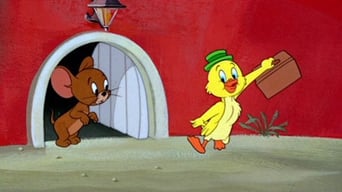
Southbound Duckling is the 90th one reel animated Tom and Jerry short. Released to theaters by Metro-Goldwyn-Mayer in 1955, it was directed by William Hanna and Joseph Barbera and produced by Fred Quimby with music by Scott Bradley. The cartoon was animated by Kenneth Muse, Ed Barge and Irven Spence with backgrounds by Vera Ohman and layouts by Richard Bickenbach.
Episode 44 : Southbound Duckling
March. 12,1955

Southbound Duckling is the 90th one reel animated Tom and Jerry short. Released to theaters by Metro-Goldwyn-Mayer in 1955, it was directed by William Hanna and Joseph Barbera and produced by Fred Quimby with music by Scott Bradley. The cartoon was animated by Kenneth Muse, Ed Barge and Irven Spence with backgrounds by Vera Ohman and layouts by Richard Bickenbach.
Episode 43 : Touché, Pussy Cat!
December. 18,1954
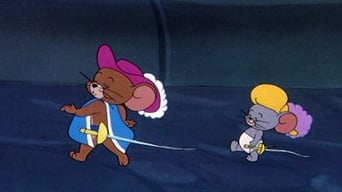
Touché, Pussy Cat! is the 89th one-reel animated Tom and Jerry short, created in 1953 directed by William Hanna and Joseph Barbera and produced by Fred Quimby with music by Scott Bradley. It was nominated for an Academy Award in 1954, the series' final Oscar nomination, while Johann Mouse won the last award for the series a year before.
Touché, Pussy Cat! is a follow-up and a prequel to the 1952 cartoon The Two Mouseketeers which did win the award that year. The cartoon was animated by Kenneth Muse, Ed Barge and Irven Spence, with backgrounds by Robert Gentle. It was released in theaters by Metro-Goldwyn-Mayer on December 18, 1954.
It was the first of the Tom and Jerry shorts to be produced in CinemaScope, but was the second CinemaScope-produced short to be released. The cartoon also exists in a non-Cinemascope format. Touché, Pussy Cat! spawned two further entries in the "Mouseketeer" series of Tom and Jerry cartoons, namely Tom and Chérie in 1954, and Royal Cat Nap in 1957, released 1958.
Episode 43 : Touché, Pussy Cat!
December. 18,1954

Touché, Pussy Cat! is the 89th one-reel animated Tom and Jerry short, created in 1953 directed by William Hanna and Joseph Barbera and produced by Fred Quimby with music by Scott Bradley. It was nominated for an Academy Award in 1954, the series' final Oscar nomination, while Johann Mouse won the last award for the series a year before.
Touché, Pussy Cat! is a follow-up and a prequel to the 1952 cartoon The Two Mouseketeers which did win the award that year. The cartoon was animated by Kenneth Muse, Ed Barge and Irven Spence, with backgrounds by Robert Gentle. It was released in theaters by Metro-Goldwyn-Mayer on December 18, 1954.
It was the first of the Tom and Jerry shorts to be produced in CinemaScope, but was the second CinemaScope-produced short to be released. The cartoon also exists in a non-Cinemascope format. Touché, Pussy Cat! spawned two further entries in the "Mouseketeer" series of Tom and Jerry cartoons, namely Tom and Chérie in 1954, and Royal Cat Nap in 1957, released 1958.
Episode 42 : Pet Peeve
November. 20,1954

Pet Peeve is the 88th one-reel animated Tom and Jerry short, created in 1953, directed by William Hanna and Joseph Barbera and produced by Fred Quimby with music by Scott Bradley. The cartoon was animated by Kenneth Muse, Ed Barge and Irven Spence, with backgrounds by Robert Gentle. It was released on November 20, 1954 by Metro-Goldwyn-Mayer.
This was the first Tom and Jerry cartoon to be released in CinemaScope and the second to be produced in the format, which widened the cinema screen to a more expansive aspect ratio to compete against the growing popularity of television. The CinemaScope process required thicker and more defined ink lines around the characters, giving them a slightly more "modern" and less detailed appearance.
The cartoon is also the first to feature an owner of the house that is not Mammy Two Shoes, the African-American maid voiced by Lillian Randolph from the first cartoon Puss Gets the Boot up to and including 1952's Push-Button Kitty. Instead, Mammy was replaced with a white married couple.
Episode 42 : Pet Peeve
November. 20,1954

Pet Peeve is the 88th one-reel animated Tom and Jerry short, created in 1953, directed by William Hanna and Joseph Barbera and produced by Fred Quimby with music by Scott Bradley. The cartoon was animated by Kenneth Muse, Ed Barge and Irven Spence, with backgrounds by Robert Gentle. It was released on November 20, 1954 by Metro-Goldwyn-Mayer.
This was the first Tom and Jerry cartoon to be released in CinemaScope and the second to be produced in the format, which widened the cinema screen to a more expansive aspect ratio to compete against the growing popularity of television. The CinemaScope process required thicker and more defined ink lines around the characters, giving them a slightly more "modern" and less detailed appearance.
The cartoon is also the first to feature an owner of the house that is not Mammy Two Shoes, the African-American maid voiced by Lillian Randolph from the first cartoon Puss Gets the Boot up to and including 1952's Push-Button Kitty. Instead, Mammy was replaced with a white married couple.
Episode 41 : Downhearted Duckling
November. 13,1954

The little duckling is sad, because he just read "the ugly duckling". He cries because the duck looks just like him. Jerry hears him crying and tries to make him feel better. But no matter what, the duck thinks he looks ugly.
Episode 41 : Downhearted Duckling
November. 13,1954

The little duckling is sad, because he just read "the ugly duckling". He cries because the duck looks just like him. Jerry hears him crying and tries to make him feel better. But no matter what, the duck thinks he looks ugly.
Episode 40 : Neapolitan Mouse
October. 02,1954

Neapolitan Mouse is the 86th one reel animated Tom and Jerry short, created in 1953 directed by William Hanna and Joseph Barbera and produced by Fred Quimby with music by Scott Bradley. The cartoon was animated by Ed Barge, Irven Spence, Ray Patterson and Kenneth Muse, with backgrounds by John Didrik Johnsen. It was released on October 2, 1954 by Metro-Goldwyn-Mayer.
Episode 40 : Neapolitan Mouse
October. 02,1954

Neapolitan Mouse is the 86th one reel animated Tom and Jerry short, created in 1953 directed by William Hanna and Joseph Barbera and produced by Fred Quimby with music by Scott Bradley. The cartoon was animated by Ed Barge, Irven Spence, Ray Patterson and Kenneth Muse, with backgrounds by John Didrik Johnsen. It was released on October 2, 1954 by Metro-Goldwyn-Mayer.
Episode 39 : Mice Follies
September. 04,1954

Mice Follies is the 85th one-reel animated Tom and Jerry short, created in 1953 directed by William Hanna and Joseph Barbera and produced by Fred Quimby with music by Scott Bradley, mainly incorporating Tchaikovsky's Sleeping Beauty Waltz. The cartoon was animated by Kenneth Muse, Ed Barge, Irven Spence and Ray Patterson with backgrounds by Robert Gentle. Mice Follies was released by Metro-Goldwyn-Mayer on September 4, 1954.
Episode 39 : Mice Follies
September. 04,1954

Mice Follies is the 85th one-reel animated Tom and Jerry short, created in 1953 directed by William Hanna and Joseph Barbera and produced by Fred Quimby with music by Scott Bradley, mainly incorporating Tchaikovsky's Sleeping Beauty Waltz. The cartoon was animated by Kenneth Muse, Ed Barge, Irven Spence and Ray Patterson with backgrounds by Robert Gentle. Mice Follies was released by Metro-Goldwyn-Mayer on September 4, 1954.
Episode 38 : Baby Butch
March. 14,1954

Baby Butch is the 84th one reel animated Tom and Jerry short, created in 1953 and directed by William Hanna and Joseph Barbera and produced by Fred Quimby with music by Scott Bradley. The cartoon was animated by Irven Spence, Kenneth Muse and Ed Barge with backgrounds by Vera Ohman. It was released on August 14, 1954, by Metro-Goldwyn-Mayer.
Episode 38 : Baby Butch
March. 14,1954

Baby Butch is the 84th one reel animated Tom and Jerry short, created in 1953 and directed by William Hanna and Joseph Barbera and produced by Fred Quimby with music by Scott Bradley. The cartoon was animated by Irven Spence, Kenneth Muse and Ed Barge with backgrounds by Vera Ohman. It was released on August 14, 1954, by Metro-Goldwyn-Mayer.
Episode 37 : Little School Mouse
May. 29,1954

Little School Mouse is the 83rd one-reel animated Tom and Jerry short, created in 1952, directed by William Hanna and Joseph Barbera and produced by Fred Quimby with music by Scott Bradley. The cartoon was animated by Irven Spence and Ed Barge, with backgrounds by Robert Gentle, and released on May 29, 1954 by Metro-Goldwyn-Mayer.
Little School Mouse is essentially Professor Tom with the roles reversed, featuring Jerry trying to instruct Tuffy in cat evasion with Tuffy befriending Tom in the end, like how Tom tried to instruct Topsy in how to catch mice in Professor Tom with Jerry befriending Topsy.
Episode 37 : Little School Mouse
May. 29,1954

Little School Mouse is the 83rd one-reel animated Tom and Jerry short, created in 1952, directed by William Hanna and Joseph Barbera and produced by Fred Quimby with music by Scott Bradley. The cartoon was animated by Irven Spence and Ed Barge, with backgrounds by Robert Gentle, and released on May 29, 1954 by Metro-Goldwyn-Mayer.
Little School Mouse is essentially Professor Tom with the roles reversed, featuring Jerry trying to instruct Tuffy in cat evasion with Tuffy befriending Tom in the end, like how Tom tried to instruct Topsy in how to catch mice in Professor Tom with Jerry befriending Topsy.
Episode 36 : Hic-cup Pup
April. 17,1954

Hic-cup Pup is the 82nd one reel animated Tom and Jerry short, created in 1952, directed by William Hanna and Joseph Barbera and produced by Fred Quimby with music by Scott Bradley. The cartoon was animated by Ed Barge, Kenneth Muse, Ray Patterson and Irven Spence with backgrounds by Robert Gentle. It was released in theaters on April 17, 1954 by Metro-Goldwyn-Mayer,
Episode 36 : Hic-cup Pup
April. 17,1954

Hic-cup Pup is the 82nd one reel animated Tom and Jerry short, created in 1952, directed by William Hanna and Joseph Barbera and produced by Fred Quimby with music by Scott Bradley. The cartoon was animated by Ed Barge, Kenneth Muse, Ray Patterson and Irven Spence with backgrounds by Robert Gentle. It was released in theaters on April 17, 1954 by Metro-Goldwyn-Mayer,
Episode 35 : Posse Cat
January. 30,1954

Posse Cat is the 81st one reel animated Tom and Jerry short, created in 1952. As with all Tom and Jerry cartoons at the time, it was directed by William Hanna and Joseph Barbera and produced by Fred Quimby with music by Scott Bradley. The short was animated by Irven Spence, Ed Barge, Kenneth Muse and Ray Patterson, the usual quartet of animators who dealt with the vast majority of Tom and Jerry shorts in the Hanna and Barbera era. The backgrounds was credited to Robert Gentle. It was released on January 30, 1954 by Metro-Goldwyn-Mayer.
Posse Cat is seen as the sequel or successor to 1950's Texas Tom, which is often considered one of the more popular Tom and Jerry shorts, though it was not nominated for an Academy Award that year.
Episode 35 : Posse Cat
January. 30,1954

Posse Cat is the 81st one reel animated Tom and Jerry short, created in 1952. As with all Tom and Jerry cartoons at the time, it was directed by William Hanna and Joseph Barbera and produced by Fred Quimby with music by Scott Bradley. The short was animated by Irven Spence, Ed Barge, Kenneth Muse and Ray Patterson, the usual quartet of animators who dealt with the vast majority of Tom and Jerry shorts in the Hanna and Barbera era. The backgrounds was credited to Robert Gentle. It was released on January 30, 1954 by Metro-Goldwyn-Mayer.
Posse Cat is seen as the sequel or successor to 1950's Texas Tom, which is often considered one of the more popular Tom and Jerry shorts, though it was not nominated for an Academy Award that year.
Episode 34 : Puppy Tale
January. 23,1954

Puppy Tale is the 80th one reel animated Tom and Jerry short, created in 1953 directed by William Hanna and Joseph Barbera and produced by Fred Quimby with music by Scott Bradley. The cartoon was animated by Kenneth Muse, Ed Barge and Irven Spence, with backgrounds by John Didrik Johnsen. It was released on January 23, 1954 by Metro-Goldwyn-Mayer.
Episode 34 : Puppy Tale
January. 23,1954

Puppy Tale is the 80th one reel animated Tom and Jerry short, created in 1953 directed by William Hanna and Joseph Barbera and produced by Fred Quimby with music by Scott Bradley. The cartoon was animated by Kenneth Muse, Ed Barge and Irven Spence, with backgrounds by John Didrik Johnsen. It was released on January 23, 1954 by Metro-Goldwyn-Mayer.
Episode 33 : Life with Tom
November. 21,1953
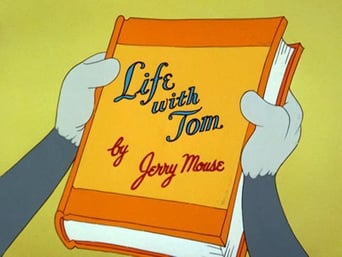
Life with Tom is the 79th one reel animated Tom and Jerry short, created in 1952 directed by William Hanna and Joseph Barbera and produced by Fred Quimby with music by Scott Bradley. The cartoon was animated by Kenneth Muse, Irven Spence and Ed Barge with backgrounds by Robert Gentle. It was released to theatres on November 21, 1953 by Metro-Goldwyn-Mayer. It is also one of several "wrap-around" T&J shorts, integrating footage from previous shorts into the plot.
Episode 33 : Life with Tom
November. 21,1953

Life with Tom is the 79th one reel animated Tom and Jerry short, created in 1952 directed by William Hanna and Joseph Barbera and produced by Fred Quimby with music by Scott Bradley. The cartoon was animated by Kenneth Muse, Irven Spence and Ed Barge with backgrounds by Robert Gentle. It was released to theatres on November 21, 1953 by Metro-Goldwyn-Mayer. It is also one of several "wrap-around" T&J shorts, integrating footage from previous shorts into the plot.
Episode 32 : Two Little Indians
October. 17,1953

Two Little Indians is the 78th one reel animated Tom and Jerry short, created in 1952 directed by William Hanna and Joseph Barbera and produced by Fred Quimby with music by Scott Bradley. The cartoon was animated by Ray Patterson, Kenneth Muse, Irven Spence and Ed Barge with backgrounds by Robert Gentle. It was released to theaters on October 17, 1953 by Metro-Goldwyn Mayer.
Episode 32 : Two Little Indians
October. 17,1953

Two Little Indians is the 78th one reel animated Tom and Jerry short, created in 1952 directed by William Hanna and Joseph Barbera and produced by Fred Quimby with music by Scott Bradley. The cartoon was animated by Ray Patterson, Kenneth Muse, Irven Spence and Ed Barge with backgrounds by Robert Gentle. It was released to theaters on October 17, 1953 by Metro-Goldwyn Mayer.
Episode 31 : Just Ducky
September. 05,1953

Just Ducky is the 77th one reel animated Tom and Jerry short, created in 1951 directed by William Hanna and Joseph Barbera and produced by Fred Quimby with music by Scott Bradley. The cartoon was animated by Irven Spence, Ed Barge, Ray Patterson, Kenneth Muse and Al Grandmain with backgrounds by Robert Gentle. It was released on September 5, 1953 by Metro-Goldwyn-Mayer.
Episode 31 : Just Ducky
September. 05,1953

Just Ducky is the 77th one reel animated Tom and Jerry short, created in 1951 directed by William Hanna and Joseph Barbera and produced by Fred Quimby with music by Scott Bradley. The cartoon was animated by Irven Spence, Ed Barge, Ray Patterson, Kenneth Muse and Al Grandmain with backgrounds by Robert Gentle. It was released on September 5, 1953 by Metro-Goldwyn-Mayer.
Episode 30 : That's My Pup!
April. 25,1953

That's My Pup! is the 76th one reel animated Tom and Jerry short, created in 1951, directed by William Hanna and Joseph Barbera and produced by Fred Quimby with music by Scott Bradley. The short was animated by animators Kenneth Muse, Ray Patterson, Ed Barge and Irven Spence, with backgrounds by Robert Gentle. This cartoon features the third pairing of Spike with his son Tyke. It was released on April 25, 1953 by Metro-Goldwyn-Mayer.
Episode 30 : That's My Pup!
April. 25,1953

That's My Pup! is the 76th one reel animated Tom and Jerry short, created in 1951, directed by William Hanna and Joseph Barbera and produced by Fred Quimby with music by Scott Bradley. The short was animated by animators Kenneth Muse, Ray Patterson, Ed Barge and Irven Spence, with backgrounds by Robert Gentle. This cartoon features the third pairing of Spike with his son Tyke. It was released on April 25, 1953 by Metro-Goldwyn-Mayer.
Episode 29 : Johann Mouse
March. 21,1953
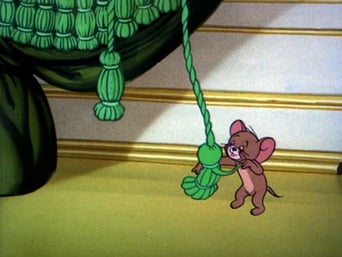
"Johann Mouse" is the 75th one-reel animated Tom and Jerry short, created in 1952 directed by William Hanna and Joseph Barbera and produced by Fred Quimby with music by Scott Bradley and Jakob Gimpel and narration by Hans Conried. The cartoon was animated by Kenneth Muse, Ray Patterson, Ed Barge and Irven Spence, with backgrounds by Robert Gentle. Placing the popular cat and mouse characters in Vienna, the capital of the Austro-Hungarian Empire, the cartoon is inspired by the work of Viennese composer Johann Strauss II. Johann Mouse won the 25th Academy Awards for Best Animated Short Film, giving the cat and mouse duo their seventh and final Oscar win. It was released on March 21, 1953, by Metro-Goldwyn-Mayer.
Episode 29 : Johann Mouse
March. 21,1953

"Johann Mouse" is the 75th one-reel animated Tom and Jerry short, created in 1952 directed by William Hanna and Joseph Barbera and produced by Fred Quimby with music by Scott Bradley and Jakob Gimpel and narration by Hans Conried. The cartoon was animated by Kenneth Muse, Ray Patterson, Ed Barge and Irven Spence, with backgrounds by Robert Gentle. Placing the popular cat and mouse characters in Vienna, the capital of the Austro-Hungarian Empire, the cartoon is inspired by the work of Viennese composer Johann Strauss II. Johann Mouse won the 25th Academy Awards for Best Animated Short Film, giving the cat and mouse duo their seventh and final Oscar win. It was released on March 21, 1953, by Metro-Goldwyn-Mayer.
Episode 28 : Jerry and Jumbo
February. 21,1953

Jerry and Jumbo is the 74th one reel animated Tom and Jerry short, created in 1951, directed by William Hanna and Joseph Barbera and produced by Fred Quimby with music by Scott Bradley. It was animated by Kenneth Muse, Irven Spence and Ed Barge with backgrounds by Robert Gentle and was released to theatres on February 21, 1953 by Metro-Goldwyn-Mayer.
Episode 28 : Jerry and Jumbo
February. 21,1953

Jerry and Jumbo is the 74th one reel animated Tom and Jerry short, created in 1951, directed by William Hanna and Joseph Barbera and produced by Fred Quimby with music by Scott Bradley. It was animated by Kenneth Muse, Irven Spence and Ed Barge with backgrounds by Robert Gentle and was released to theatres on February 21, 1953 by Metro-Goldwyn-Mayer.
Episode 27 : The Missing Mouse
January. 10,1953

The Missing Mouse is the 73rd one reel American animated Tom and Jerry short, created in 1951, directed by William Hanna and Joseph Barbera and produced by Fred Quimby. It was the first and only cartoon in the Hanna-Barbera era that the music was not composed by Scott Bradley. Instead, Edward Plumb scored the music for this cartoon. It was animated by Ray Patterson, Ed Barge, Kenneth Muse and Irven Spence, with backgrounds by Robert Gentle. It was released on January 10, 1953 by Metro-Goldwyn-Mayer.
Episode 27 : The Missing Mouse
January. 10,1953

The Missing Mouse is the 73rd one reel American animated Tom and Jerry short, created in 1951, directed by William Hanna and Joseph Barbera and produced by Fred Quimby. It was the first and only cartoon in the Hanna-Barbera era that the music was not composed by Scott Bradley. Instead, Edward Plumb scored the music for this cartoon. It was animated by Ray Patterson, Ed Barge, Kenneth Muse and Irven Spence, with backgrounds by Robert Gentle. It was released on January 10, 1953 by Metro-Goldwyn-Mayer.
Episode 26 : The Dog House
November. 29,1952

The Dog House is the 72nd one reel animated Tom and Jerry short, created in 1951 directed by William Hanna and Joseph Barbera and produced by Fred Quimby with music by Scott Bradley. It was animated by Ed Barge, Kenneth Muse, Ray Patterson, Irven Spence, with backgrounds by John Didrik Johnsen. The cartoon's plot was inspired by, and is very loosely based on the 1948 Cary Grant/Myrna Loy film Mr. Blandings Builds His Dream House. It was released on November 29, 1952 by Metro-Goldwyn-Mayer
Episode 26 : The Dog House
November. 29,1952

The Dog House is the 72nd one reel animated Tom and Jerry short, created in 1951 directed by William Hanna and Joseph Barbera and produced by Fred Quimby with music by Scott Bradley. It was animated by Ed Barge, Kenneth Muse, Ray Patterson, Irven Spence, with backgrounds by John Didrik Johnsen. The cartoon's plot was inspired by, and is very loosely based on the 1948 Cary Grant/Myrna Loy film Mr. Blandings Builds His Dream House. It was released on November 29, 1952 by Metro-Goldwyn-Mayer
Episode 25 : Cruise Cat
October. 18,1952

Cruise Cat is the 71st one reel animated Tom and Jerry short, directed by William Hanna and Joseph Barbera and produced by Fred Quimby with music by Scott Bradley.This is one of the few where Tom gets the better of Jerry for most of the cartoon until the tables turn. This cartoon was animated by Irven Spence, Ray Patterson, Ed Barge and Kenneth Muse with backgrounds by Robert Gentle. It was released on October 18, 1952 by Metro-Goldwyn-Mayer.
Episode 25 : Cruise Cat
October. 18,1952

Cruise Cat is the 71st one reel animated Tom and Jerry short, directed by William Hanna and Joseph Barbera and produced by Fred Quimby with music by Scott Bradley.This is one of the few where Tom gets the better of Jerry for most of the cartoon until the tables turn. This cartoon was animated by Irven Spence, Ray Patterson, Ed Barge and Kenneth Muse with backgrounds by Robert Gentle. It was released on October 18, 1952 by Metro-Goldwyn-Mayer.
Episode 24 : Push-Button Kitty
September. 06,1952

Push-Button Kitty is a 1952 one-reel animated cartoon and is the 70th Tom and Jerry short directed by William Hanna and Joseph Barbera and produced by Fred Quimby.
Episode 24 : Push-Button Kitty
September. 06,1952

Push-Button Kitty is a 1952 one-reel animated cartoon and is the 70th Tom and Jerry short directed by William Hanna and Joseph Barbera and produced by Fred Quimby.
Episode 23 : Fit to Be Tied
July. 26,1952

Fit to Be Tied is a 1952 one-reel animated cartoon and is the 69th Tom and Jerry short directed by William Hanna and Joseph Barbera and produced by Fred Quimby.
Episode 23 : Fit to Be Tied
July. 26,1952

Fit to Be Tied is a 1952 one-reel animated cartoon and is the 69th Tom and Jerry short directed by William Hanna and Joseph Barbera and produced by Fred Quimby.
Episode 22 : Little Runaway
June. 14,1952

Little Runaway is a 1952 one-reel animated cartoon and is the 68th Tom and Jerry short directed by William Hanna and Joseph Barbera and produced by Fred Quimby. It was animated by the usual team of animators who worked under Hanna and Barbera, credited to Ed Barge, Kenneth Muse, Irven Spence and Ray Patterson. As with the majority of Tom and Jerry cartoons, Robert Gentle created the backgrounds, and Scott Bradley composed the music.
Episode 22 : Little Runaway
June. 14,1952

Little Runaway is a 1952 one-reel animated cartoon and is the 68th Tom and Jerry short directed by William Hanna and Joseph Barbera and produced by Fred Quimby. It was animated by the usual team of animators who worked under Hanna and Barbera, credited to Ed Barge, Kenneth Muse, Irven Spence and Ray Patterson. As with the majority of Tom and Jerry cartoons, Robert Gentle created the backgrounds, and Scott Bradley composed the music.
Episode 21 : Triplet Trouble
April. 19,1952

Triplet Trouble is a 1952 one-reel animated cartoon and is the 67th Tom and Jerry short directed by William Hanna and Joseph Barbera and produced by Fred Quimby. It was animated by the usual team of Ray Patterson, Ed Barge, Kenneth Muse and Irven Spence, and the music was scored by Scott Bradley.
Episode 21 : Triplet Trouble
April. 19,1952

Triplet Trouble is a 1952 one-reel animated cartoon and is the 67th Tom and Jerry short directed by William Hanna and Joseph Barbera and produced by Fred Quimby. It was animated by the usual team of Ray Patterson, Ed Barge, Kenneth Muse and Irven Spence, and the music was scored by Scott Bradley.
Episode 20 : Smitten Kitten
April. 12,1952

Smitten Kitten is a 1952 American one-reel animated cartoon and is the 66th Tom and Jerry short directed by William Hanna and Joseph Barbera and produced by Fred Quimby. It was the only Tom and Jerry cartoon to be animated by one animator. It was animated by Kenneth Muse and the music was composed by Scott Bradley. It is also one of several "wrap-around" T&J shorts, integrating footage from previous shorts into the plot.
Episode 20 : Smitten Kitten
April. 12,1952

Smitten Kitten is a 1952 American one-reel animated cartoon and is the 66th Tom and Jerry short directed by William Hanna and Joseph Barbera and produced by Fred Quimby. It was the only Tom and Jerry cartoon to be animated by one animator. It was animated by Kenneth Muse and the music was composed by Scott Bradley. It is also one of several "wrap-around" T&J shorts, integrating footage from previous shorts into the plot.
Episode 19 : The Two Mouseketeers
March. 15,1952

The Two Mouseketeers is a 1952 American one-reel animated cartoon and is the 65th Tom and Jerry short, produced in Technicolor and released to theatres on March 15, 1952 by Metro-Goldwyn Mayer. It was produced by Fred Quimby and directed by William Hanna and Joseph Barbera, with musical supervision by Scott Bradley. The cartoon was animated by Ed Barge, Kenneth Muse and Irven Spence. The character of Nibbles was voiced by Francoise Brun-Cottan, then six years old. The Two Mouseketeers won the 1951 Academy Award for Best Short Subject: Cartoons. Such was the cartoon's success, that Hanna and Barbera created a total of four adventures in the Mouseketeers series, the second of the tetralogy, 1954's Touché, Pussy Cat! which got an Oscar nomination .
Episode 19 : The Two Mouseketeers
March. 15,1952

The Two Mouseketeers is a 1952 American one-reel animated cartoon and is the 65th Tom and Jerry short, produced in Technicolor and released to theatres on March 15, 1952 by Metro-Goldwyn Mayer. It was produced by Fred Quimby and directed by William Hanna and Joseph Barbera, with musical supervision by Scott Bradley. The cartoon was animated by Ed Barge, Kenneth Muse and Irven Spence. The character of Nibbles was voiced by Francoise Brun-Cottan, then six years old. The Two Mouseketeers won the 1951 Academy Award for Best Short Subject: Cartoons. Such was the cartoon's success, that Hanna and Barbera created a total of four adventures in the Mouseketeers series, the second of the tetralogy, 1954's Touché, Pussy Cat! which got an Oscar nomination .
Episode 18 : The Duck Doctor
February. 16,1952

The Duck Doctor is a 1952 one-reel animated cartoon and is the 64th Tom and Jerry cartoon directed by William Hanna and Joseph Barbera and produced by Fred Quimby. It stars a Quacker as a little wild duck, rather than the yellow duckling.
Episode 18 : The Duck Doctor
February. 16,1952

The Duck Doctor is a 1952 one-reel animated cartoon and is the 64th Tom and Jerry cartoon directed by William Hanna and Joseph Barbera and produced by Fred Quimby. It stars a Quacker as a little wild duck, rather than the yellow duckling.
Episode 17 : The Flying Cat
January. 12,1952

The Flying Cat is a 1952 one-reel animated cartoon and is the 63rd Tom and Jerry cartoon directed by William Hanna and Joseph Barbera and produced by Fred Quimby. The cartoon's music was composed by Scott Bradley, and the animation was by Keneth Muse, Irven Spence, Ed Barge and Ray Patterson.
Episode 17 : The Flying Cat
January. 12,1952

The Flying Cat is a 1952 one-reel animated cartoon and is the 63rd Tom and Jerry cartoon directed by William Hanna and Joseph Barbera and produced by Fred Quimby. The cartoon's music was composed by Scott Bradley, and the animation was by Keneth Muse, Irven Spence, Ed Barge and Ray Patterson.
Episode 16 : Cat Napping
December. 08,1951

Cat Napping is a 1951 one-reel animated cartoon and is the 62nd Tom and Jerry short directed by William Hanna and Joseph Barbera and produced by Fred Quimby.
Episode 16 : Cat Napping
December. 08,1951

Cat Napping is a 1951 one-reel animated cartoon and is the 62nd Tom and Jerry short directed by William Hanna and Joseph Barbera and produced by Fred Quimby.
Episode 15 : Nit-witty Kitty
October. 06,1951

Nit-Witty Kitty is a 1951 one-reel animated cartoon and is the 61st Tom and Jerry cartoon. It was released to theaters on October 6, 1951 by Metro-Goldwyn Mayer.
Episode 15 : Nit-witty Kitty
October. 06,1951

Nit-Witty Kitty is a 1951 one-reel animated cartoon and is the 61st Tom and Jerry cartoon. It was released to theaters on October 6, 1951 by Metro-Goldwyn Mayer.
Episode 14 : Slicked-up Pup
September. 08,1951

Slicked-up Pup is a 1951 American one-reel animated cartoon and is the 60th Tom and Jerry cartoon directed by William Hanna and Joseph Barbera and produced by Fred Quimby. The cartoon was scored by Scott Bradley and animated by Ed Barge, Kenneth Muse, Irven Spence and Ray Patterson. It features the second appearance of both Spike and Tyke together.
Episode 14 : Slicked-up Pup
September. 08,1951

Slicked-up Pup is a 1951 American one-reel animated cartoon and is the 60th Tom and Jerry cartoon directed by William Hanna and Joseph Barbera and produced by Fred Quimby. The cartoon was scored by Scott Bradley and animated by Ed Barge, Kenneth Muse, Irven Spence and Ray Patterson. It features the second appearance of both Spike and Tyke together.
Episode 13 : His Mouse Friday
July. 07,1951

His Mouse Friday is a 1951 one-reel animated cartoon and is the 59th Tom and Jerry cartoon directed by William Hanna and Joseph Barbera and produced by Fred Quimby for Metro Goldwyn Mayer. It was animated by Kenneth Muse, Irven Spence, Ray Patterson and Ed Barge and released in theatres on July 7, 1951. The title is a pun combining references to the film His Girl Friday and the character of Friday from the novel Robinson Crusoe.
Episode 13 : His Mouse Friday
July. 07,1951

His Mouse Friday is a 1951 one-reel animated cartoon and is the 59th Tom and Jerry cartoon directed by William Hanna and Joseph Barbera and produced by Fred Quimby for Metro Goldwyn Mayer. It was animated by Kenneth Muse, Irven Spence, Ray Patterson and Ed Barge and released in theatres on July 7, 1951. The title is a pun combining references to the film His Girl Friday and the character of Friday from the novel Robinson Crusoe.
Episode 12 : Sleepy-Time Tom
May. 26,1951

Sleepy-Time Tom is a 1951 one-reel animated cartoon and is the 58th Tom and Jerry cartoon that was created by directors William Hanna and Joseph Barbera, produced by Fred Quimby, scored by Scott Bradley and animated by Ed Barge, Kenneth Muse, Irven Spence and Ray Patterson. The short was released in theaters on May 26, 1951.
Episode 12 : Sleepy-Time Tom
May. 26,1951

Sleepy-Time Tom is a 1951 one-reel animated cartoon and is the 58th Tom and Jerry cartoon that was created by directors William Hanna and Joseph Barbera, produced by Fred Quimby, scored by Scott Bradley and animated by Ed Barge, Kenneth Muse, Irven Spence and Ray Patterson. The short was released in theaters on May 26, 1951.
Episode 11 : Jerry's Cousin
April. 07,1951

Jerry's Cousin is a 1951 one-reel animated cartoon and is the 57th Tom and Jerry short released in 1951 on April 7 by Metro-Goldwyn-Mayer, it was nominated for the 1951 Academy Award for Best Short Cartoon, but lost to Gerald McBoing-Boing, a UPA production. The cartoon was directed by William Hanna and Joseph Barbera, produced by Fred Quimby, scored by Scott Bradley, and animated by Ray Patterson, Ed Barge, Kenneth Muse and Irven Spence. Paul Frees provided the voice of Jerry's cousin, Muscles.
Working titles for this particular cartoon included City Cousin and Muscles Mouse before settling for Jerry's Cousin.
The character of Muscles reappeared in Tom and Jerry: The Magic Ring, however his name changed to Freddie and he was hostile to Jerry.
Episode 11 : Jerry's Cousin
April. 07,1951

Jerry's Cousin is a 1951 one-reel animated cartoon and is the 57th Tom and Jerry short released in 1951 on April 7 by Metro-Goldwyn-Mayer, it was nominated for the 1951 Academy Award for Best Short Cartoon, but lost to Gerald McBoing-Boing, a UPA production. The cartoon was directed by William Hanna and Joseph Barbera, produced by Fred Quimby, scored by Scott Bradley, and animated by Ray Patterson, Ed Barge, Kenneth Muse and Irven Spence. Paul Frees provided the voice of Jerry's cousin, Muscles.
Working titles for this particular cartoon included City Cousin and Muscles Mouse before settling for Jerry's Cousin.
The character of Muscles reappeared in Tom and Jerry: The Magic Ring, however his name changed to Freddie and he was hostile to Jerry.
Episode 10 : Jerry and the Goldfish
March. 03,1951

Jerry and the Goldfish is a 1951 American one-reel animated cartoon and is the 56th Tom and Jerry short directed by William Hanna and Joseph Barbera and produced by Fred Quimby. It was animated by Irven Spence, Ray Patterson, Ed Barge and Kenneth Muse, with music by Scott Bradley and backgrounds by Robert Gentle.
Episode 10 : Jerry and the Goldfish
March. 03,1951

Jerry and the Goldfish is a 1951 American one-reel animated cartoon and is the 56th Tom and Jerry short directed by William Hanna and Joseph Barbera and produced by Fred Quimby. It was animated by Irven Spence, Ray Patterson, Ed Barge and Kenneth Muse, with music by Scott Bradley and backgrounds by Robert Gentle.
Episode 9 : Casanova Cat
January. 06,1951
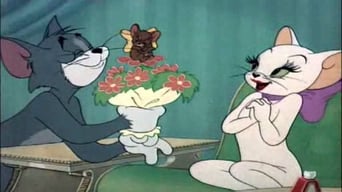
Casanova Cat is a 1951 one-reel animated cartoon and is the 55th Tom and Jerry short directed by William Hanna and Joseph Barbera and produced by Fred Quimby.
Episode 9 : Casanova Cat
January. 06,1951

Casanova Cat is a 1951 one-reel animated cartoon and is the 55th Tom and Jerry short directed by William Hanna and Joseph Barbera and produced by Fred Quimby.
Episode 8 : Cue Ball Cat
November. 25,1950
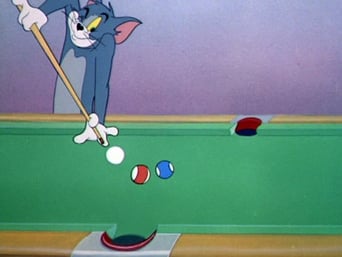
Cue Ball Cat is a 1950 one-reel animated cartoon and is the 54th Tom and Jerry short directed by William Hanna and Joseph Barbera and produced by Fred Quimby. It was animated by Kenneth Muse, Irven Spence, Ed Barge and Ray Patterson, with backgrounds by Robert Gentle and music by Scott Bradley.
Episode 7 : The Framed Cat
October. 21,1950

The Framed Cat is a 1950 one-reel animated cartoon and is the 53rd Tom and Jerry short directed by William Hanna and Joseph Barbera and produced by Fred Quimby. It was animated by Ed Barge, Kenneth Muse, Irven Spence and Ray Patterson.
Episode 6 : Tom and Jerry in the Hollywood Bowl
September. 16,1950

Tom and Jerry in the Hollywood Bowl is a 1950 American one-reel animated cartoon and is the 52nd Tom and Jerry short directed by William Hanna and Joseph Barbera. The cartoon, as the title suggests, is set at the Hollywood Bowl in California, where Tom is conducting a large orchestra. The cartoon was animated by Kenneth Muse, Irven Spence, Ray Patterson and Ed Barge. It was released to theatres in September 16, 1950 and reissued in 1957. The music was scored by Scott Bradley, making use of Johann Strauss II's Overture of "Die Fledermaus."
Episode 5 : Safety Second
July. 01,1950

Safety Second is a 1950 one-reel animated cartoon and is the 51st Tom and Jerry short directed by William Hanna and Joseph Barbera and produced by Fred Quimby. The working title for this cartoon was F'r Safety Sake before Hanna and Barbera finally settled for Safety Second. The short was animated by Ray Patterson, Ed Barge, Kenneth Muse, Irven Spence and Al Grandmain, scored by Scott Bradley and released on July 4, 1950, just in time for the American Independence Day celebrations of that year. The title is pun on the phrase Safety First!
Plot: The cartoon short begins with Jerry and Nibbles asleep in their beds. Jerry looks at his calendar and seeing it's the Fourth of July, he wakes up Nibbles. He instantly brings out firecrackers, but Jerry puts them back into the shed. The mouse gives his calendar a look again and sees his daily quotation: "Make it safe and sane". Jerry and Nibbles then go outside and enjoy their holiday with noisemakers with Jerry showing him it's still the Fourth of July without fireworks. before Nibbles lights a firework from his diaper. Jerry grabs it away and then fails to throw it off before the firecracker explodes on him. Jerry then holds out his hand as if to say, "Give me the rest of them." Nibbles hands him another tiny firework from his diaper and smiles before dashing away. Seeing through this, Jerry then picks up Nibbles and turns him upside down, and he finds that Nibbles had a sizable amount of fireworks hidden in his diaper. As if he punished Nibbles, Jerry gets him to stand in one of the corner, but no sooner does Nibbles repeat his transgression with a firework under the bed before leaving, and Jerry is again blown up by the dynamite before he can toss it out of his front door. Nibbles then hides under his sheets.
Episode 4 : Jerry and the Lion
April. 08,1950

Jerry and the Lion is a 1950 one-reel animated cartoon and is the 50th Tom and Jerry short. It was produced in Technicolor and released to theatres on April 8, 1950 by Metro-Goldwyn Mayer. The cartoon was animated by Irven Spence, Ed Barge, Kenneth Muse, and Ray Patterson. It was directed by William Hanna and Joseph Barbera, and produced by Fred Quimby. Scott Bradley arranged the music, Robert Gentle did the backgrounds, and Frank Graham provided the voice of the lion that befriends Jerry in the cartoon.
Episode 3 : Texas Tom
March. 11,1950

Texas Tom is a 1950 one-reel animated cartoon and is the 49th Tom and Jerry short directed by William Hanna and Joseph Barbera and produced by Fred Quimby. It was animated by Kenneth Muse, Irven Spence, Ray Patterson and Ed Barge and released to theatres on March 11, 1950. Excerpts of this cartoon are seen in two other Tom and Jerry shorts, Smitten Kitten and Cruise Cat; both instances with altered audio.
Episode 2 : Saturday Evening Puss
January. 14,1950

Saturday Evening Puss is a 1950 one-reel animated cartoon and is the 48th Tom and Jerry short directed by William Hanna and Joseph Barbera who created the cat and mouse duo ten years earlier. The cartoon was produced by Fred Quimby, scored by Scott Bradley and animated by Ed Barge, Kenneth Muse, Irven Spence and Ray Patterson.
Episode 1 : Little Quacker
January. 07,1950

Little Quacker is a 1950 American one-reel animated cartoon and is the 47th Tom and Jerry short directed by William Hanna and Joseph Barbera and produced by Fred Quimby. It is the first Tom and Jerry short to be released in the 1950s. Little Quacker marks the debut of the eponymous character, Quacker the duckling who would go on to appear in seven more shorts, making him one of the more enduring supporting characters in the Tom and Jerry cartoon series. The voice of Quacker and his parents, along with a single WAH WAH! line by Tom, was supplied by Red Coffee; Coffee's rendition of Quacker's voice was mostly an impersonation of Donald Duck as performed by Clarence Nash.
Seasons
Similar titles
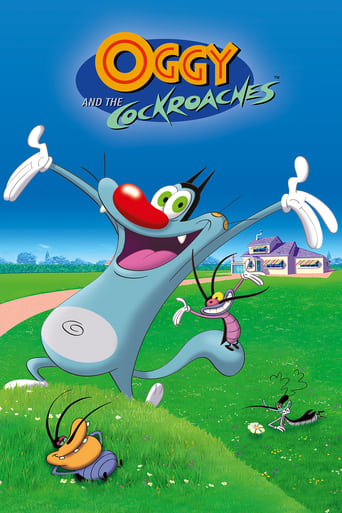
Prime Video
Oggy and the Cockroaches
Oggy, an anthropomorphic cat, would prefer to spend his days watching television and eating, but is continuously pestered by three roaches: Joey, Marky and Dee Dee. The cockroaches' slapstick mischief ranges from plundering Oggy's refrigerator to hijacking the train he just boarded. In many situations Oggy is also helped by Jack, who is more violent and short-tempered than him and is also annoyed by the cockroaches. Bob, a short-tempered bulldog, also appears in the show, and is Oggy's neighbor.

The Originals
A spin-off from The Vampire Diaries and set in New Orleans, The Originals centers on the Mikaelson siblings, otherwise known as the world's original vampires: Klaus, Elijah, and Rebekah. Now Klaus must take down his protégé, Marcel, who is now in charge of New Orleans, in order to re-take his city, as he originally built New Orleans. Klaus departed from the city after being chased down by his father Mikael, while it was being constructed and Marcel took charge. As Klaus has returned after many years, his ego has provoked him to become the king of the city. "Every King needs an heir" says Klaus, accepting the unborn child. The child is a first to be born to a hybrid and a werewolf.
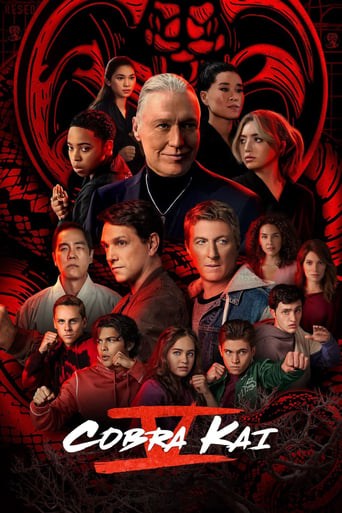
Cobra Kai
This Karate Kid sequel series picks up 30 years after the events of the 1984 All Valley Karate Tournament and finds Johnny Lawrence on the hunt for redemption by reopening the infamous Cobra Kai karate dojo. This reignites his old rivalry with the successful Daniel LaRusso, who has been working to maintain the balance in his life without mentor Mr. Miyagi.
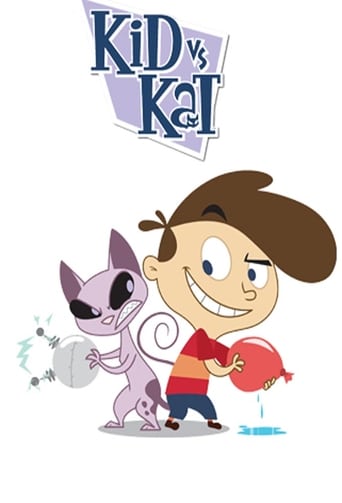
Kid vs. Kat
Kid vs. Kat is a Canadian-American animated television series developed and produced at Studio B Productions. The show was created and co-directed by Rob Boutilier. The series is distributed by Studio B Productions. The feature revolves around a 10-year-old boy's constant battle with his sister's Sphinx cat which, in reality, is a cybernetic alien.
The show premiered on YTV in Canada on October 25, 2008, aired on Disney XD in the United States on February 21, 2009, and then ended on June 4, 2011. It ran for 2 seasons, spanning 52 episodes.
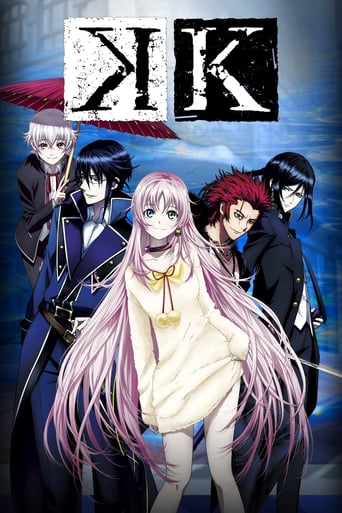
K-Project
Shiro is an easygoing teenager content with just being a student—until his seemingly perfect life is halted when a bloodthirsty clan, glowing red with fire, attempts to kill him in the streets. Unbeknownst to Shiro, he is suspected of murdering a member of their clan and will need a miracle to escape their vengeance. Miraculously, a young man named Kurou Yatogami swings in and aids Shiro in his getaway, only to reveal he's also after Shiro's life. Now a hunted man, Shiro will have to evade the clans of seven powerful kings and desperately try to prove his innocence—before it’s too late!
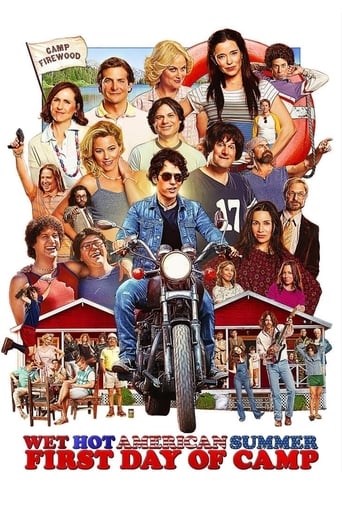
Wet Hot American Summer: First Day of Camp
It's the first day of camp in this outrageous prequel to the hilarious 2001 cult classic movie. And at Camp Firewood, anything can happen.
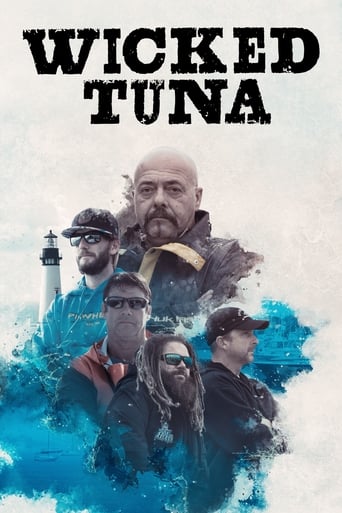
Prime Video
Wicked Tuna
Fishing is a hard life, and harder with bluefin stocks depleted. In Gloucester, Massachusetts, there's a special breed of fishermen. For generations they've used rod and reel to catch the elusive bluefin tuna. They depend on these fish for their livelihood, and the competition is brutal. Over the next 10 weeks, the most skilled fishermen will set out in the frigid waters of the North Atlantic in hopes of catching the valuable bluefin tuna. When one bluefin can bring in as much as $20,000—they'll do whatever it takes to hook up.
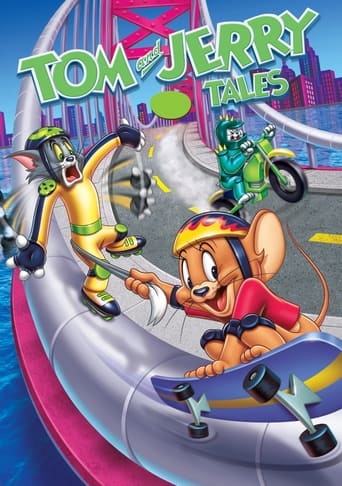
Tom and Jerry Tales
Tom and Jerry Tales is an American animated television series featuring the cat-and-mouse duo Tom and Jerry.

The Tom and Jerry Show
The iconic cat and mouse rivals are back in a fresh take on the classic series. Preserving the look, characters and sensibility of the original, this series shines a brightly colored, high-definition lens on the madcap slapstick and never-ending battle that has made Tom and Jerry two of the most beloved characters of all time.
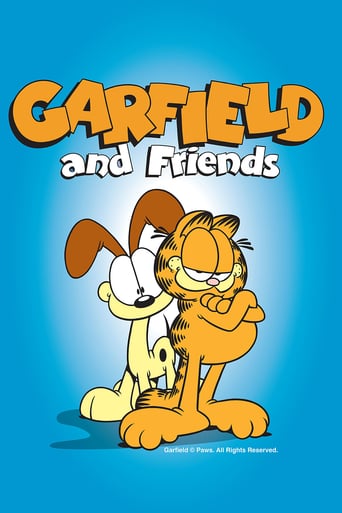
Garfield and Friends
The animated stories of Garfield the cat, Odie the dog, their owner Jon and the trouble they get into. And also Orson the Pig and his adventures on a farm with his fellow farm animals.
Related
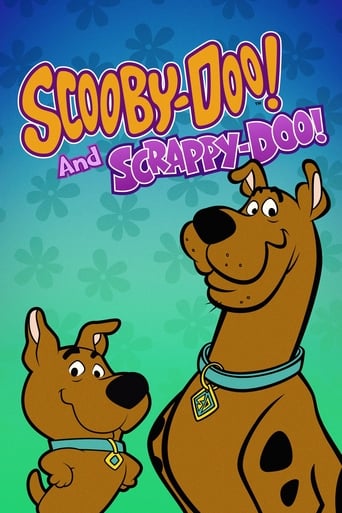
Scooby-Doo and Scrappy-Doo
The original thirty-minute version of Scooby-Doo and Scrappy-Doo constitutes the fourth incarnation of the Hanna-Barbera Saturday morning cartoon Scooby-Doo. It premiered on September 22, 1979 and ran for one season on ABC as a half-hour program. A total of sixteen episodes were produced. It was the last Hanna-Barbera cartoon series to use the studio's laugh track. Cartoon Network's classic channel Boomerang reruns the series.

K. Street Pali Hill
K. Street Pali Hill is an Indian Thriller soap that aired on STAR Plus. It replaced the highly popular thriller Kaahin Kissii Roz when it concluded in 2004. K. Street Pali Hill was successful for about a year, only to plummet in popularity, owing to many of the actors' replacements. This show pointed many similarities with DD National popular daily soap Shanti

Kitani Mohabbat Hai
Kitani Mohobbat Hai is an Indian soap opera which aired on NDTV Imagine from January 19, 2009 until its end on September 25, 2009. Kitani Mohabbat Hai Season 2 started airing on 1 November 2010. Season 2 is not a continuation; it stars the same leads in a different story.

The Pink Panther Show
The Pink Panther Show is a showcase of cartoon shorts produced by David H. DePatie and Friz Freleng between 1969 and 1979, starring the animated Pink Panther character from the opening credits of the live-action films. The series was produced by Mirisch Films and DePatie-Freleng Enterprises, and was broadcast on two American television networks: from September 6, 1969 — September 2, 1978 on NBC; and from September 9, 1978 — September 1, 1980 on ABC.
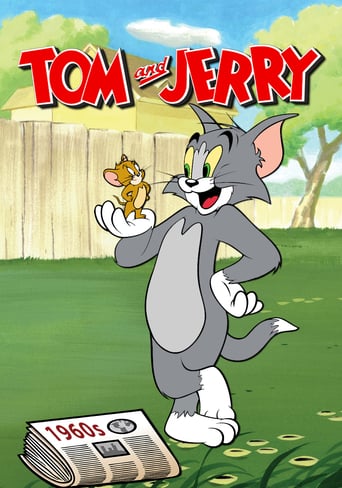
The Tom and Jerry Show
The New Tom & Jerry Show is an animated television series produced for Saturday mornings by Hanna-Barbera Productions in association with Metro-Goldwyn-Mayer Television in 1975 for ABC based on the theatrical shorts and characters Tom and Jerry.
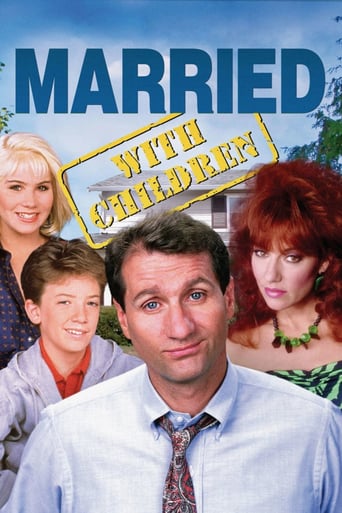
Prime Video
Married... with Children
Al Bundy is an unsuccessful middle aged shoe salesman with a miserable life and an equally dysfunctional family. He hates his job, his wife is lazy, his son is dysfunctional (especially with women), and his daughter is dim-witted and promiscuous.

Dexter's Laboratory
Dexter, a boy-genius with a secret laboratory, constantly battles his sister Dee Dee, who always gains access despite his best efforts to keep her out, as well as his arch-rival and neighbor, Mandark.
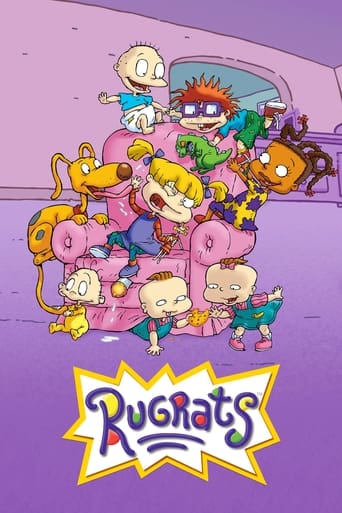
Rugrats
Focuses on a group of toddlers, most prominently Tommy, Chuckie, Phil, Lil, and Angelica, and their day-to-day lives, usually involving common life experiences that become adventures in the babies' imaginations. Adults in the series are almost always unaware of what the children are up to; however, this only provides more room for the babies to explore and discover their surroundings.
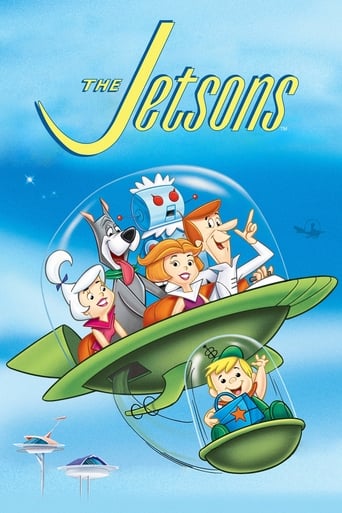
The Jetsons
Meet George Jetson and his quirky family: wife Jane, son Elroy and daughter Judy. Living in the automated, push-button world of the future hasn't made life any easier for the harried husband and father, who gets into one comical misadventure after another!

Pinky and the Brain
Pinky and Brain are genetically enhanced laboratory mice who reside in a cage in the Acme Labs research facility. Brain is self-centered and scheming; Pinky is good-natured but feebleminded. In each episode, Brain devises a new plan to take over the world, which ultimately ends in failure, usually due to Pinky's idiocy, the impossibility of Brain's plan, Brain's own arrogance, or just circumstances beyond their control.
Top Streaming TV Show
#1

Ikaw
November. 12,2021
5.9
#2
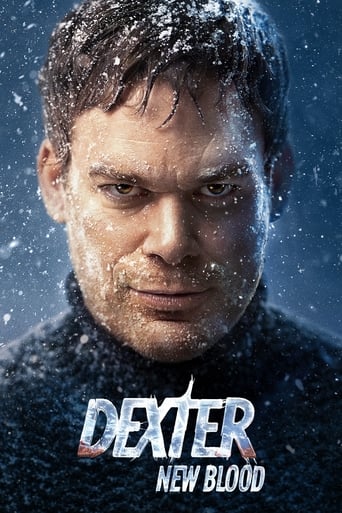
Dexter: New Blood
November. 07,2021
8.1
#3
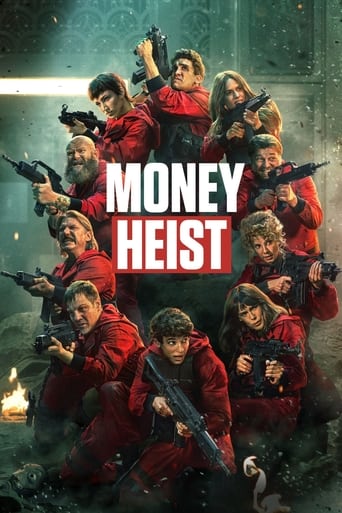
Money Heist
May. 02,2017
8.4
#4

Chicago Fire
October. 10,2012
8
#5
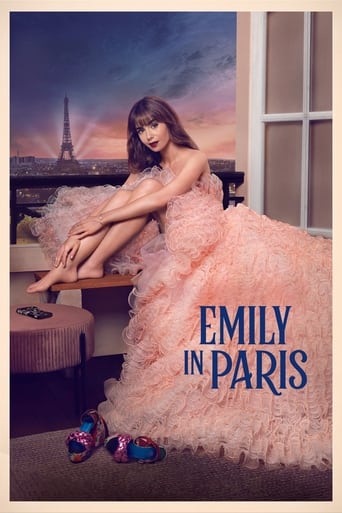
Emily in Paris
October. 02,2020
6.9
#6
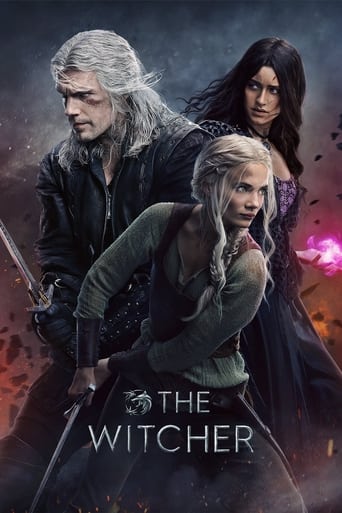
The Witcher
December. 20,2019
8
#7

Yellowstone
June. 20,2018
8.7
#8
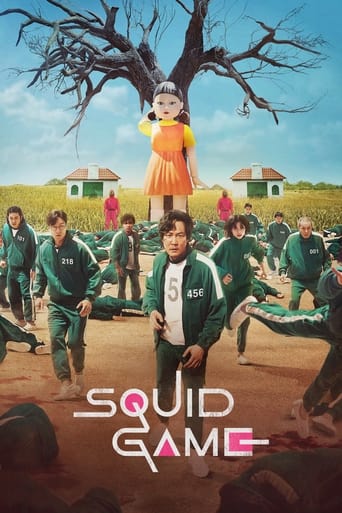
Squid Game
September. 17,2021
8
#9
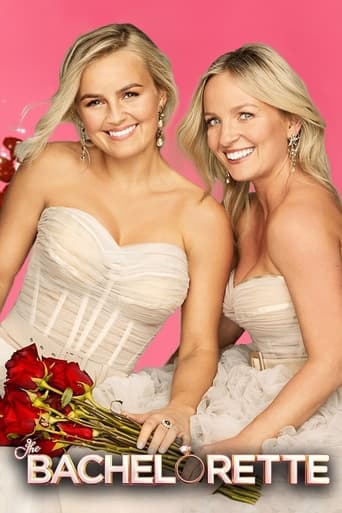
The Bachelorette
September. 23,2015
5.3
#10
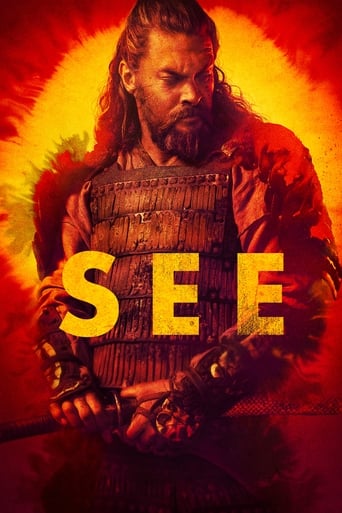
See
November. 01,2019
7.6

